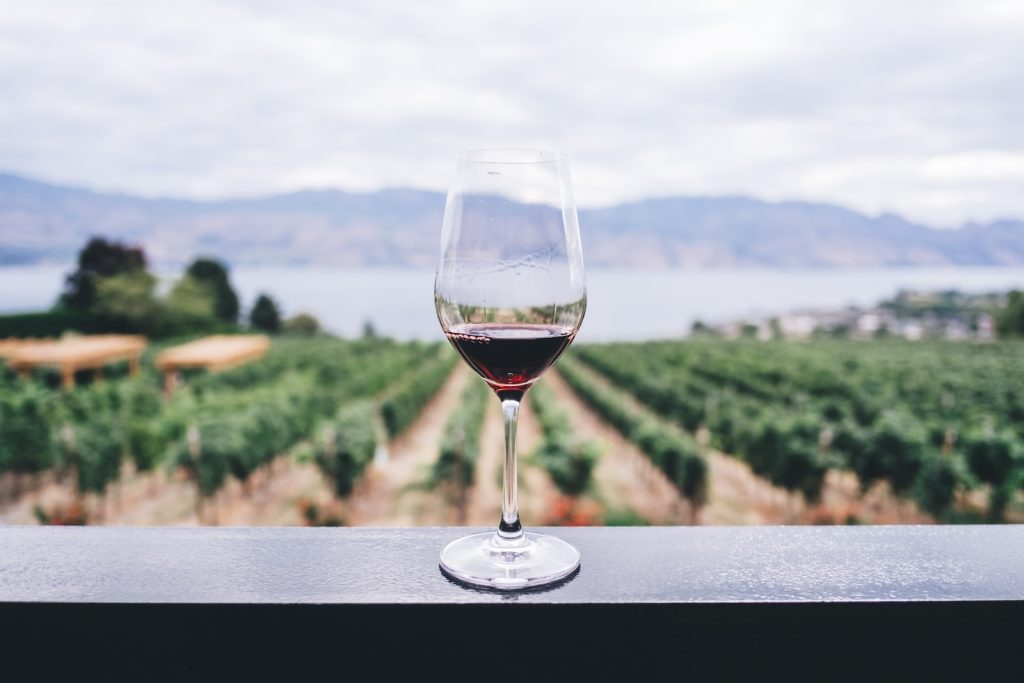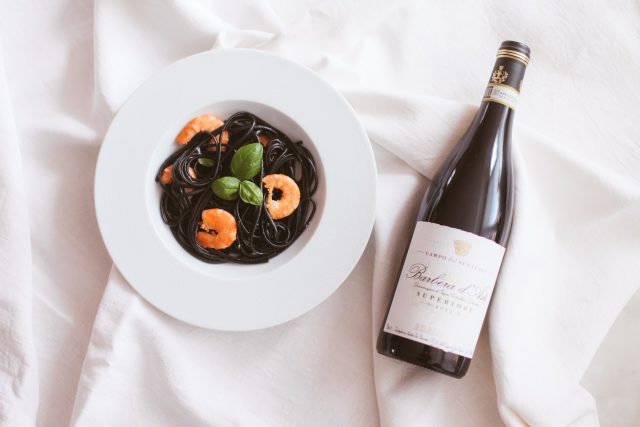France is a country renowned for its culture and unique cuisine. From the rich sauces to the exquisite pastries, French food is as diverse and flavorful as it is famous. Similarly, French wine has long been celebrated for its varied range of flavors and quality production. Whether you are a connoisseur seeking the perfect vintage or an amateur just beginning to explore the world of fermentation, there is something for everyone in France’s oenological offerings.
French Cuisine & Wine
French cuisine is renowned for its elegance, complexity, and use of high-quality ingredients. From the rich sauces of classic dishes like coq au vin and boeuf bourguignon to the light and flaky pastries of croissants and pain au chocolat, French cuisine is an art form that has captivated food lovers around the world. And no French meal is complete without a glass of wine to complement the flavors of the food.
France is home to some of the world’s most famous wine regions, including Bordeaux, Champagne, and Burgundy, which produce a wide range of red, white, and sparkling wines. Whether you’re savoring a crisp Sauvignon Blanc with oysters or a bold Cabernet Sauvignon with a hearty beef dish, French wine is the perfect accompaniment to the rich and flavorful cuisine of this iconic culinary tradition.
Regional Dishes: North, South, East, West
French cuisine is as diverse as the regions that make up this beautiful country. Each region boasts its own unique culinary traditions and flavors that are influenced by local ingredients and cultural influences. Here are some of the top regional dishes from the North, South, East, and West of France:
- North: The region of Normandy is known for its rich dairy products, such as butter, cream, and cheese. A popular dish from this region is the Normandy-style pork with apples, which features pork cooked with apples, cream, and Calvados, a type of apple brandy.
- South: The region of Provence is known for its use of herbs, garlic, and olive oil. A popular dish from this region is ratatouille, a vegetable stew made with eggplant, zucchini, bell peppers, tomatoes, and various herbs.
- East: The region of Alsace is heavily influenced by German cuisine, and a popular dish from this region is tarte flambée, a type of thin, crispy pizza made with crème fraîche, onions, and bacon.
- West: The region of Brittany is known for its seafood, and a popular dish from this region is the Breton-style fish soup, which features a variety of fish, shellfish, and vegetables cooked in a rich, flavorful broth.
These are just a few examples of the many regional dishes that can be found throughout France, each with its own unique flavors and ingredients. Whether you’re in the North, South, East, or West of France, you’re sure to find a delicious and unforgettable culinary experience that will leave you wanting more.
Pairing Wines with Food
In French cuisine, pairing wines with food is considered an art form, and there are some general guidelines to follow to ensure that the flavors of the food and wine complement each other. Here are some tips for pairing French wines with food:
- White wines: White wines like Chardonnay and Sauvignon Blanc pair well with seafood dishes, such as oysters, shrimp, and scallops. They also pair well with poultry and light pasta dishes.
- Red wines: Red wines like Pinot Noir and Merlot pair well with red meats like beef, lamb, and venison. They also pair well with heartier dishes like stews and casseroles.
- Rosé wines: Rosé wines pair well with light and fresh dishes like salads and grilled fish. They also pair well with spicy dishes, such as curries and Asian cuisine.
- Champagne and sparkling wines: Champagne and sparkling wines pair well with salty dishes like caviar and smoked salmon. They also pair well with rich, creamy dishes like foie gras and lobster bisque.
It’s important to note that these are just general guidelines, and ultimately the best way to pair wines with food is to experiment and find what works for your own tastes. The key is to consider the flavors and textures of the food and wine and aim for a balance of complementary flavors. By pairing the right wine with your French cuisine, you can take your dining experience to the next level and truly savor the flavors of this iconic culinary tradition.
Classic French Dining Etiquette
Classic French dining etiquette is steeped in tradition and an important part of the French culinary experience. Here are some essential tips to keep in mind when dining in a traditional French restaurant:
- Dress appropriately: Dressing well is an important part of French dining culture, so it’s essential to dress appropriately in a traditional French restaurant. Business attire is usually appropriate, and casual clothing is generally not recommended.
- Wait to be seated: In a traditional French restaurant, it’s customary to be seated by the maître d’. Do not seat yourself, even if a table appears to be unoccupied.
- Use utensils properly: French dining etiquette places a lot of importance on the proper use of utensils. Start with the outermost utensil and work inward as each course is served.
- Keep your hands on the table: In French dining culture, keeping your hands in your lap during the meal is considered impolite. Instead, keep your hands on the table, with your wrists resting on the table’s edge.
- Don’t rush: There are usually multiple courses in a traditional French meal, and it’s important not to rush through the meal. Take your time and savor each course, enjoying the flavors and textures of the food.
- Don’t ask for substitutions: In a traditional French restaurant, it’s considered impolite to ask for substitutions or changes to the menu. Instead, try to find something on the menu that you will enjoy.
Following these classic French dining etiquette tips, you can fully immerse yourself in the French culinary experience and enjoy a memorable meal steeped in tradition and culture.
Experiencing the French Terroir
Experiencing French terroir is essential to understanding and appreciating French cuisine and wine. The concept of terroir is central to French culture and refers to the unique characteristics of a specific geographic location that give food or wine its distinctive flavor and aroma.
To truly experience the French terroir, you can visit local farmers’ markets and vineyards to sample and purchase locally-produced food and wine. Many regions of France are known for their specific culinary specialties, such as Champagne for its sparkling wine, Burgundy for its Pinot Noir, and Provence for its lavender and olive oil.
You can also take part in guided food and wine tours, which offer a more structured way to explore the local terroir. These tours often include visits to local vineyards, tastings of regional wines, and visits to artisanal food producers, such as cheese makers, bakers, and chocolatiers.
Additionally, there are many cooking classes and culinary workshops available in France, which offer a hands-on way to learn about French cooking and the use of local ingredients. These classes often incorporate locally sourced ingredients and are led by experienced chefs who are experts in regional cuisine.
By immersing yourself in the French terroir, you can gain a deeper understanding and appreciation for French culinary culture and the unique flavors and aromas that are associated with different regions of the country. Whether visiting local markets and vineyards, taking culinary tours, or attending cooking classes, experiencing the terroir is essential to any food lover’s journey to France.
Exploring Bistros & Markets
Exploring bistros and markets is a great way to experience France’s rich and diverse food culture. Small bistros, and cozy restaurants that serve simple, hearty dishes, are an essential part of French dining culture. These restaurants often feature seasonal menus and daily specials and offer a relaxed, convivial atmosphere where locals and visitors can enjoy delicious, home-style cooking.
Markets are also an important part of French food culture. Many cities and towns have weekly markets that feature a wide range of locally grown and produced foods, such as cheeses, bread, meats, fruits, and vegetables. These markets offer a chance to sample and purchase fresh, seasonal ingredients and to meet local farmers and producers.
In Paris, the Marché d’Aligre and the Marché des Enfants Rouges are popular markets offering a wide range of food and artisanal products. The Cours Saleya market in Nice and the Saint-Rémy-de-Provence market are popular destinations for food lovers in Provence. In Bordeaux, the Marché des Capucins is a bustling market that offers a wide range of local products, including fresh seafood, cheeses, and wines.
In addition to exploring bistros and markets on your own, many guided food tours in France offer a more structured way to discover the local food culture. These tours often include visits to local bistros and markets, tastings of regional specialties, and visits to local artisanal food producers.
By exploring bistros and markets, you can immerse yourself in France’s rich and diverse food culture and discover the unique flavors and aromas associated with different regions of the country. Whether through visiting a neighborhood bistro or exploring a bustling market, there are countless opportunities to experience France’s rich and delicious food culture.
Touring Vineyards & Wineries

Touring vineyards and wineries is a popular activity for wine enthusiasts visiting France. France produces some of the world’s finest wines, and touring the vineyards and wineries allows visitors to gain a deeper understanding of the winemaking process and to sample the different wines that are produced in different regions of the country.
Many vineyards and wineries offer tours that include visits to the vineyards and the cellars, as well as tastings of different wines. Some tours also include food pairings or meals that are designed to complement the wines.
In Bordeaux, one of France’s most famous wine regions, numerous vineyards and wineries offer tours and tastings. Château Lafite Rothschild, Château Margaux, and Château Mouton Rothschild are among the most famous and prestigious vineyards in the region. In Burgundy, visitors can tour the historic vineyards and cellars of Domaine de la Romanée-Conti, which produces some of the most sought-after wines in the world.
In addition to touring individual vineyards and wineries, there are also many guided wine tours available in France that offer a more structured way to explore the local wine culture. These tours may focus on a specific region or wine type and can include visits to multiple vineyards and wineries.
Touring vineyards and wineries, you can gain a deeper appreciation for the history and culture of winemaking in France and for the different types of wine that are produced in different regions of the country. Whether through a self-guided tour or a structured wine tour, there are countless opportunities to explore France’s rich and delicious wine culture.
Enjoying the Best of France
France is a country that is celebrated for its rich culinary and wine culture, and there are countless opportunities to explore the diverse and delicious food and wine that the country has to offer. From enjoying classic French dishes in local bistros to touring vineyards and wineries, there are endless ways to immerse oneself in the flavors and aromas of France.
Whether you are exploring the regional dishes, pairing wines with food, experiencing the French terroir, or touring bistros and markets, there is something for everyone to enjoy. And by embracing the classic French dining etiquette, you can fully appreciate the unique dining culture the country is known for.
France’s culinary and wine culture is a true feast for the senses, and visiting the country offers a chance to indulge in some of the world’s finest flavors and aromas. So whether you are a foodie or a wine enthusiast, a trip to France is a must for anyone who appreciates the art of dining and winemaking.






























